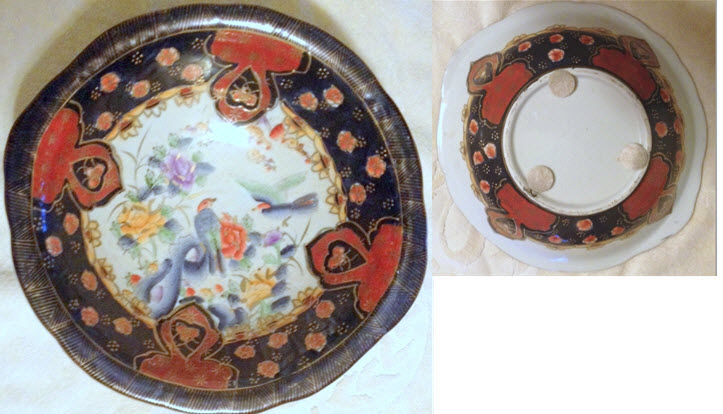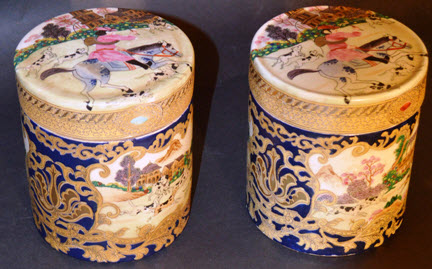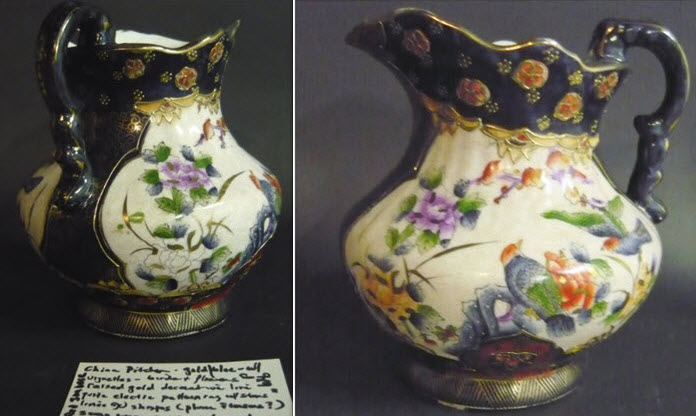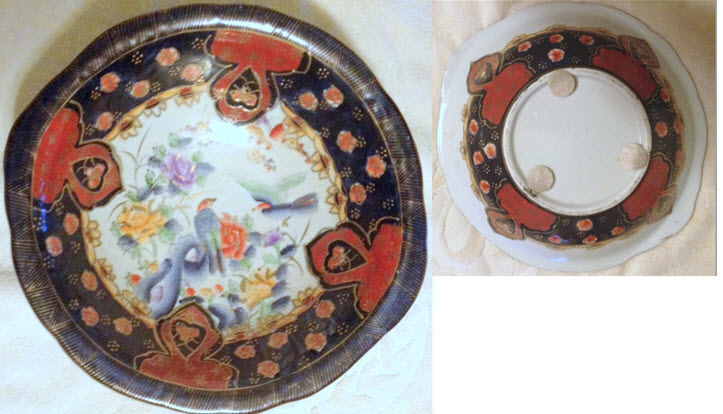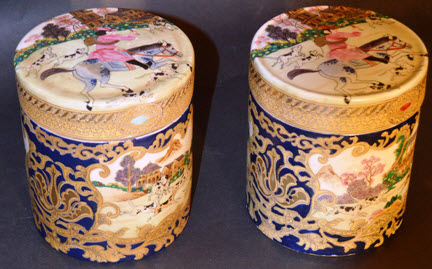
|
Subject:Re: 2 Decorative Jars & Pitcher & Bowl set w/ pix
Posted By: Bill H Wed, Jan 07, 2015
The superficial texture of your pitcher and basin represents lengthy Chinese experience in catering to the Western penchant for taking such a crackled appearance to mean age instead of ingenuity in these ceramics. The trade-off here is that your set most likely is soft-paste stoneware and not highly vitrified porcelain, which is quite impervious to the development of age cracks when properly fired.
In other words, your pottery was fired in a manner especially meant to create the crackle, just as modern Satsuma-type wares comes out of Chinese (and Japanese) kilns looking to the uninitiated like they might have a century or more of age about them. However, a hundred years ago, a pitcher and basin like yours would have been about half as heavy, because they would have been true porcelain and not pottery.
Considering that Chinese porcelain decorators persisted for most of their history in painting and perpetuating patterns that were peculiarly Chinese, it probably wouldn't have occurred to a Qing or Republic-era Chinese porcelain painter to decorate a dish in this kind of quasi-Imari pattern. The Moriage slip-painted plum flowers and other Japanese-inspired touches look almost out of place around what might be the more mainstream Chinese-looking reserves of short-tailed birds among peonies except for them being done in a gaudy palette of colors, some of which hues probably weren't around in the 19th century.
I believe I am on fairly safe grounds in saying that this pattern was not produced in China before the late 20th century, and I'm even more certain in saying that the use of transfer decoration to mass-produce complicated designs such as this on ceramic wares was not practiced on a commercial scale in China until after 1912, in the Republic period.
Best regards,
Bill H.


|
 Reposting w/ pix
Reposting w/ pix  ( China & Japan ) - glenn s. michaels - Jan 04, 2015 (07:23 PM)
( China & Japan ) - glenn s. michaels - Jan 04, 2015 (07:23 PM)  Re: Reposting w/ pix - Bill H - Jan 05, 2015 (04:05 AM)
Re: Reposting w/ pix - Bill H - Jan 05, 2015 (04:05 AM)  2 Decorative Jars & Pitcher & Bowl set w/ pix
2 Decorative Jars & Pitcher & Bowl set w/ pix  - glenn s. michaels - Jan 06, 2015 (10:10 AM)
- glenn s. michaels - Jan 06, 2015 (10:10 AM)  Re: 2 Decorative Jars & Pitcher & Bowl set w/ pix - Bill H - Jan 07, 2015 (03:41 AM)
Re: 2 Decorative Jars & Pitcher & Bowl set w/ pix - Bill H - Jan 07, 2015 (03:41 AM) 
